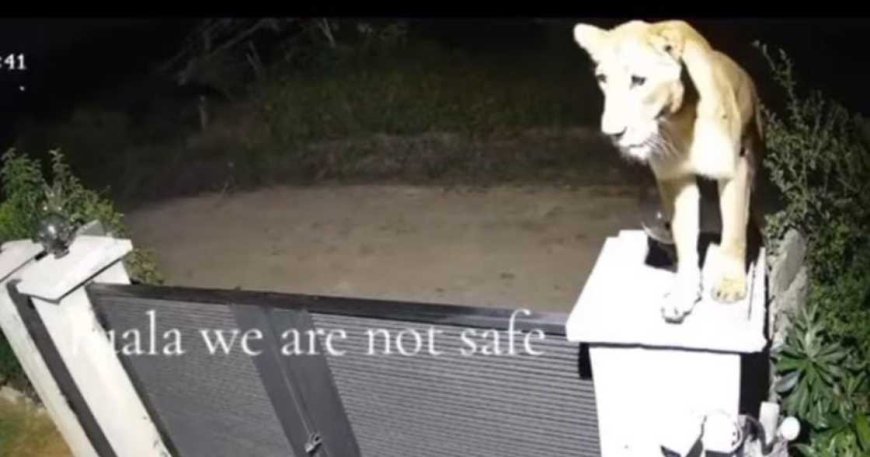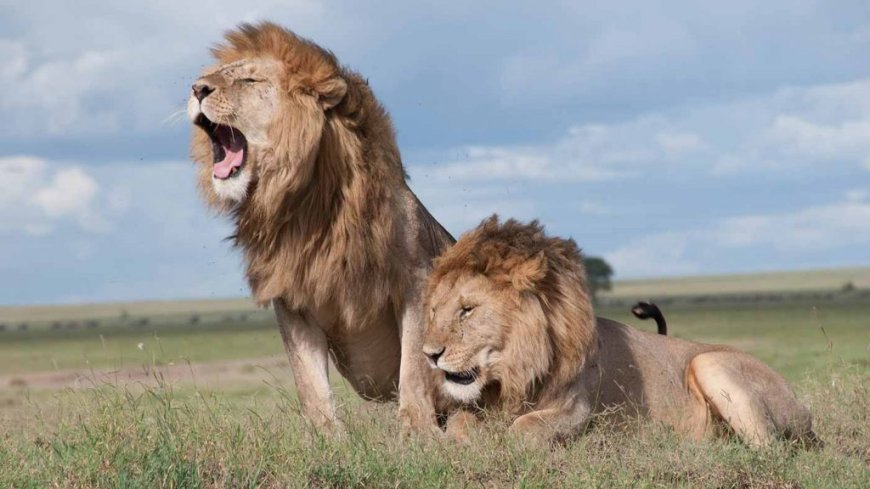Cabinet’s Plan To Stop Lions From Roaming Into Nairobi Estates Revealed
The project is expected to drastically reduce animal incursions into residential zones such as Rongai and Kitengela

In a landmark conservation move, the Cabinet has approved the implementation of the Nairobi National Park–Athi-Kapiti Wildlife Corridor, a project designed to restore ancient migratory routes for wildlife while easing the growing human-wildlife tensions around Nairobi.
The corridor will reconnect Nairobi National Park with surrounding conservancies in Machakos and Kajiado counties, reopening vital dispersal areas for species such as zebras, wildebeests, and gazelles whose paths have been blocked by rapid urban expansion in areas like Rongai, Kitengela, and Athi River.
The three-year project, set to begin in the 2026/2027 financial year, will involve land acquisition, wildlife-friendly fencing, and the construction of overpasses and underpasses to allow safe animal crossings over roads and infrastructure.
"Portions of public land, including sections of the Export Processing Zone, will be surrendered to the Kenya Wildlife Service for conservation use," Cabinet announced in a statement released on Tuesday, November 11.

President William Ruto chairing a Cabinet meeting on November 11, 2025. /PCS
The move follows a July 2023 presidential directive calling for urgent action to combat habitat fragmentation and escalating human-wildlife conflict around Nairobi National Park — a challenge that’s intensified as wildlife corridors have been overtaken by housing estates, roads, and industries.
"Cabinet affirmed that this initiative aligns with the Wildlife Corridors and Dispersal Areas Report (2016), Vision 2030, and Kenya’s commitment to sustainable biodiversity conservation," added the statement.
The project is expected to drastically reduce animal incursions into residential zones such as Rongai and Kitengela, where encounters moreso with stray lions, as well as buffaloes and zebras, have become more frequent.
By providing clear migration routes, the corridor will keep animals within designated conservation areas while minimizing damage to farms and property.
In addition to physical infrastructure, the plan includes community engagement, zoning regulations, and potential benefit-sharing or compensation schemes for affected residents. The idea is to strike a balance between conservation and coexistence — ensuring that locals are part of the solution, not sidelined by it.
To finance the initiative, the government plans to tap into innovative funding models such as nature bonds and debt-for-nature swaps, alongside partnerships with conservation organizations and international donors.
If executed successfully, the Nairobi National Park–Athi-Kapiti Wildlife Corridor could set a global example for how fast-growing cities can expand without suffocating the natural ecosystems around them — proving that urban development and wildlife protection can thrive side by side.
The Cabinet's move could bring an end to what has become a common experience with Rongai residents: a lion stalking residences in the area, with the proximity to the Nairobi National Park and human encroachment all to blame for numerous sightings of lionesses and hyenas.
With Nairobi National Park being the only park in the world located within a city, this unique dynamic also comes with its fair share of risks, as the chances of human-wildlife conflict are considerably heightened.
One factor that heightens the chances of predators escaping the national park is the rains, which cause prey to migrate to the unfenced southern part of Nairobi National Park. This part neighbours settlements such as Rongai, Kitengela, and the wider Kajiado area.
Since predators like lions, hyenas, and leopards are attracted by these conditions, they inevitably follow the prey, and eventually stray into human settlements, with a majority of encounters going viral on social media by way of shared video clips.







